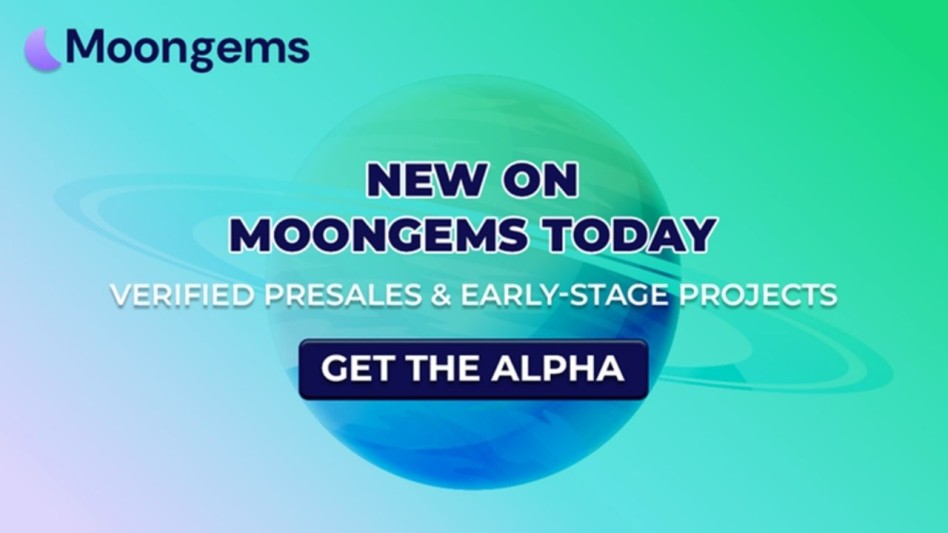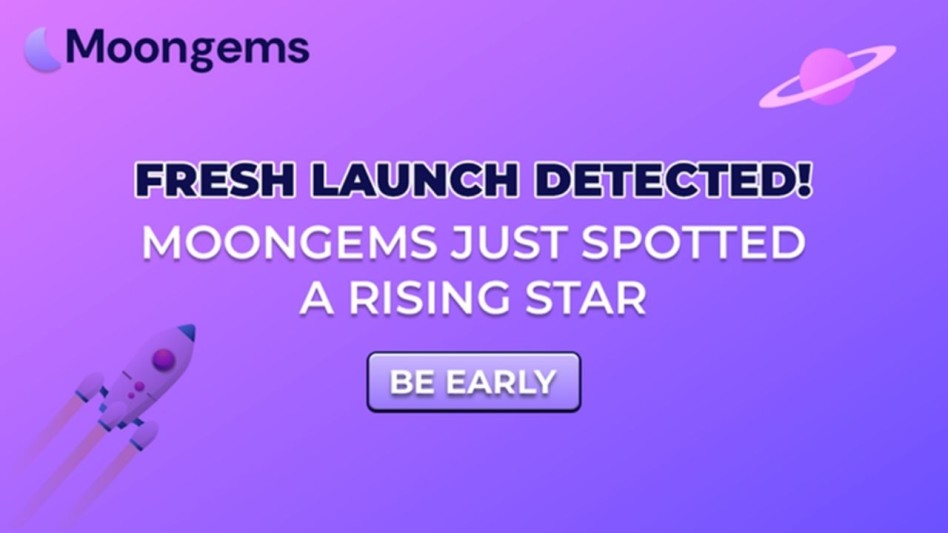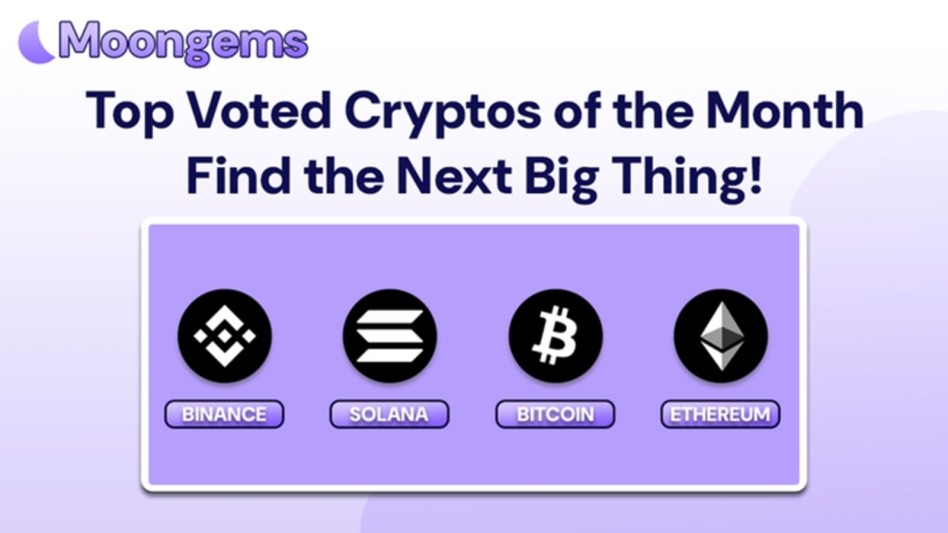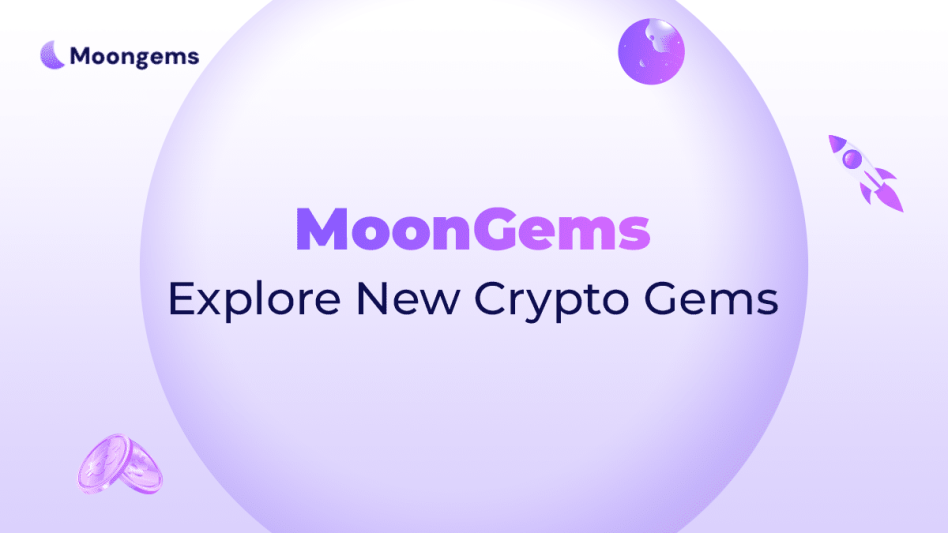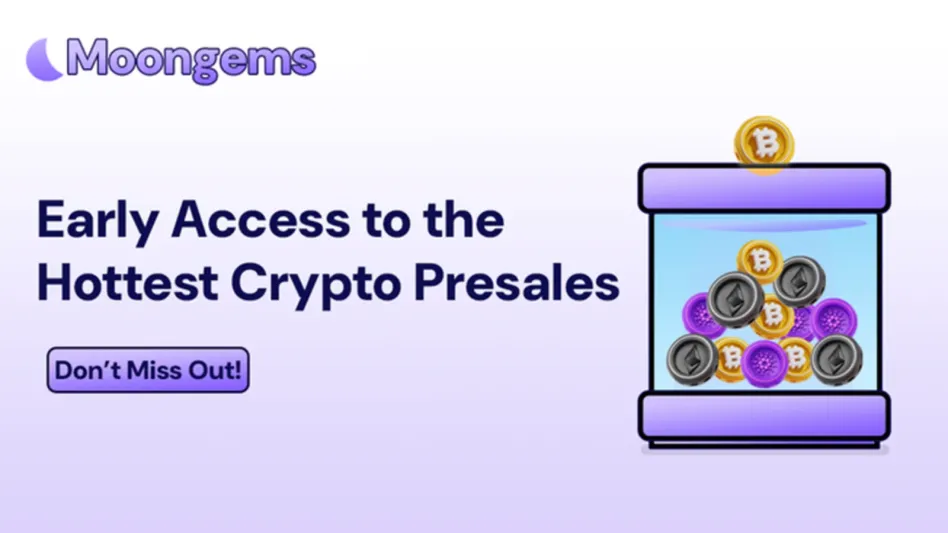Author: Jawad Hussain – Crypto Analyst & Web3 Researcher | 9+ years tracking presales, IDOs, and token launches. Follow him on Twitter and LinkedIn.
The presale phase of a cryptocurrency project is where early believers plant their flag, and early scammers often do the same. With thousands of new tokens launching every year, it’s become increasingly difficult to distinguish between a legit opportunity and a well-dressed trap. In 2025, knowing how to spot a legitimate crypto presale is not just helpful—it’s absolutely critical.
From fake LinkedIn profiles to cloned whitepapers, malicious actors' techniques have evolved alongside the industry's sophistication. But smart investors have tools, too. By understanding what real legitimacy looks like—through security audits, verified team members, transparent development plans, and honest funding mechanics—you can protect your capital and identify genuine projects early.
This MoonGems article outlines the core elements that define a trustworthy presale. These aren’t surface-level signals but structural markers of a team committed to delivering real value. This guide will sharpen your radar if you’re eyeing a new DeFi protocol, a meme coin with utility, or a gaming token with roadmap ambitions.
Let’s explore what separates credible crypto presales from those destined to implode after the hype fades.
1. Identity Verification and Founder Accountability
The first question any investor should ask before joining a presale is: “Who’s behind this?” Projects with anonymous or fake teams consistently cause some of the most damaging scams in the space. On the other hand, presales that feature founders who are doxxed and verified through KYC processes demonstrate a level of accountability that significantly reduces risk.
KYC (Know Your Customer) verification builds trust, adds legal pressure, and increases reputational risk for bad actors. Teams that undergo KYC through respected third-party firms like SolidProof, AssureDeFi, or CertiK Shield are putting their identity and credibility on the line, which is a positive sign.
Additionally, legitimate teams maintain a consistent and transparent online presence. This includes verified LinkedIn profiles, GitHub commits, AMA participation, and live community engagement. Investors should be able to ask direct questions and expect timely, intelligent responses.
While full anonymity doesn’t automatically make a project untrustworthy, the absence of verifiable team information—combined with no KYC—is a clear warning. If you can’t find the real people behind the project, it’s best to walk away.
2. Third-Party Security Audits: Code Can’t Be Trusted Until It’s Checked
Even the most promising project can fall apart if its smart contract is vulnerable. That’s why a legitimate presale will always feature an audit from a trusted third-party security firm. These audits don’t guarantee perfection, but they do provide transparency and demonstrate professionalism.
A comprehensive audit analyzes the project’s smart contract code for:
- Critical security flaws
- Privileged functions or backdoors
- Minting permissions
- Ownership controls
- Logical errors that could lead to exploits
Top auditing firms in 2025 include CertiK, Hacken, SolidProof, and PeckShield. Projects should link directly to the published audit report, preferably before the presale begins. If an audit is “coming soon” or only mentioned vaguely in marketing materials, it’s a red flag.
Also, look for audits that include ongoing monitoring or re-audits post-deployment. Projects that continue to engage auditors as features roll out tend to be more serious about security than those that view audits as a one-time checkbox.
Ultimately, smart contracts control your funds. If the team won’t let a third party inspect the code, you probably shouldn’t trust it with your money.
3. Transparent Roadmaps with Deliverable Milestones
Legit projects aren’t built on promises—they’re built on plans. That’s why a detailed, realistic roadmap is a core component of any credible presale. Investors should be able to follow the team’s journey from token creation to product launch and ecosystem expansion.
A high-quality roadmap includes:
- Clear milestones with timelines (Q2 2025, Q3 2025, etc.)
- Technical deliverables (beta platforms, smart contract integrations, staking portals)
- Business goals (CEX listings, partnerships, revenue models)
- Community growth phases (DAO formation, airdrops, governance features)
A generic roadmap filled with buzzwords like “NFT marketplace,” “Web3 ecosystem,” or “Metaverse integration” means nothing without time-based goals and resource allocation.
Red flags include:
- No roadmap at all
- Vague phrases without explanation
- Frequent roadmap changes with no reasoning
- Deadlines that keep slipping with no updates
Remember, a roadmap isn’t just a visual—it’s a promise. And in the world of early-stage crypto, broken promises can cost real money.
4. Verified Listings and Public Access Launchpads
Where a project launches says a lot about its credibility, while direct presales hosted on a project’s own website are common, the most secure early-stage launches often happen through third-party launchpads that vet and onboard quality projects.
Launchpads like PinkSale, TrustPad, and Poolz typically require KYC verification, token contract audits, and basic project evaluations before accepting listings. While these platforms don’t eliminate all risk, they provide a layer of scrutiny that’s often missing from self-hosted presales.
Look for:
- Presales featured on respected launchpads
- Whitelist systems with transparent rules
- Hard caps that prevent whales from dominating the supply
- Listings on presale aggregators or trackers that highlight key metrics
While MoonGems occasionally showcases projects that run independent presales, those listings must meet minimum credibility benchmarks, such as locked liquidity, published vesting schedules, and identifiable founders.
A legitimate project wants wide public access, not just insider buys. If a presale is quietly happening without public transparency or aggregator exposure, consider that a concern.
5. Vesting, Lockups, and Long-Term Commitment
One of the clearest signs that a project is planning for longevity—not a quick cash grab—is how it handles token lockups and vesting schedules. Presales with fully unlocked team tokens at launch are often headed for disaster. When insiders can sell at any time, retail investors are left holding the bag.
The best presales follow a structure like:
- 6–12 month cliff for team/advisor tokens
- Linear vesting over 12–24 months
- Gradual release of marketing or development wallets
- Locked liquidity for at least 6 months
All of this should be published in a detailed tokenomics breakdown. The vesting schedule should match the roadmap’s development pace. A token that unlocks all insider allocations before the first dApp goes live is poorly structured and probably short-lived.
Smart investors always ask: “Who can sell when?” If the answer isn’t clear, there’s probably a reason for the secrecy.
6. Community Engagement and Public Transparency
Crypto isn’t just code—it’s a community. The strength and behavior of a project’s community can say more about its legitimacy than any press release or audit. Real projects build real audiences. Scams build hype bots.
Evaluate:
- Telegram and Discord activity (organic, not spammed)
- AMAs with founders or devs
- Transparency during tough questions
- Medium blog posts or GitHub updates
- Reactions to criticism (defensive or constructive?)
A legit project team embraces feedback and doesn’t shy away from hard questions. They publish progress reports, share upcoming plans, and provide insight into decisions. Transparency builds trust, and trust is what turns presale buyers into long-term holders.
On the flip side, beware of communities that delete questions, ban critics, or go silent after launch. These behaviors often precede broken promises.
7. Real-World Use Case or Ecosystem Integration
Finally, every legitimate project must answer this simple question: “What problem does this solve?” A presale without a real-world use case—or integration into an existing ecosystem—is more likely to fade into irrelevance after the listing hype dies down.
Use cases can include:
- Utility in DeFi platforms or liquidity protocols
- Access to premium features in apps, games, or dApps
- Cross-chain bridge functionality or governance participation
- Integration with real-world payment or identity systems
Even meme tokens can justify ongoing engagement if structured with gamification or community staking incentives. But projects with no product, no usage, and no partners are relying entirely on hype, and that hype rarely lasts.
Before you buy, ask: “Will anyone use this token in six months if the price drops 70%?” If the answer is no, it might be time to look elsewhere.
Conclusion
In the crypto presale space, legitimacy isn’t flashy—it’s foundational. From verified founders to published audits and clearly mapped roadmaps, the most trustworthy projects offer transparency, structure, and long-term alignment with their community.
While FOMO-driven buying is tempting, especially in high-ROI markets, savvy investors know that security and sustainability are the real keys to success. These seven factors—KYC, audits, roadmaps, launchpad vetting, vesting schedules, community engagement, and utility—offer a clear framework for evaluating any presale, regardless of how popular it looks online.
The gap between hype and value will only widen as the market matures. The presales that survive—and thrive—will be those built on fundamentals, not shortcuts.
Use this MoonGems guide as your filter. Apply it to every project you consider. And when in doubt, trust the data, not Discord.
Frequently Asked Questions
- What makes a crypto presale legitimate?
A legitimate presale includes KYC-verified founders, audited contracts, and a transparent roadmap. - Why are audits important before a presale?
Audits help detect vulnerabilities or backdoors that could lead to exploits or rug pulls. - What’s a vesting schedule?
It’s a time-based token release plan that prevents early dumps from team wallets or private investors. - Can anonymous teams still be trusted?
Possibly, but only if they have audits, consistent development, and clear communication. - How do launchpads help improve presale safety?
They typically vet projects through KYC, contract audits, and soft due diligence before listing. - What should I look for in a project roadmap?
Clear deadlines, deliverable milestones, and product-based goals—not just marketing promises. - Is community engagement a real trust signal?
Absolutely. Active, respectful, and transparent community behavior often reflects internal project health.
Glossary of Key Terms
- KYC (Know Your Customer): Identity verification of project founders
- Smart Contract Audit: Code inspection by third-party security firm
- Vesting Schedule: Time-release of locked tokens
- Cliff Period: Initial delay before tokens begin unlocking
- Launchpad: Platform for launching presale or IDO tokens
- Hard Cap: Maximum amount a project aims to raise
- Whitelisting: Pre-approved list for presale participation
- Utility Token: Token with defined in-platform use
- AMA (Ask Me Anything): Public session for community Q&A
- Doxxing: Revealing the real identity of anonymous developers
Disclaimer
This article is for informational purposes only and does not constitute financial advice. Participation in crypto presales carries risk, including potential capital loss. Conduct your own due diligence (DYOR) and consult a licensed advisor before making investment decisions.




